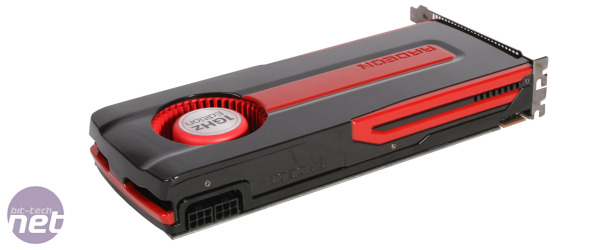
Performance Analysis
For the most-part the HD 7870 2GB performed similarly, or slightly faster than, the retiring HD 6970 2GB throughout our test suite. In ARMA 2 at 1,920 x 1,080 with 4x AA its minimum frame rate of 50fps matched that of the GTX 580 1.5GB, while at 2,560 x 1,600 with 4x AA in the same game a minimum frame rate of 30fps saw it marginally pip the HD 6970 2GB’s 29fps. At 5,760 x 1,080 however, the HD 6970 2GB came out marginally faster, with a minimum frame rate of 18fps to the HD 7870 2GB’s 17fps.In Battlefield 3, the HD 7870 2GB continues the Southern Islands pattern of providing significant gains over the previous generation, stomping all over the HD 6970 2GB with a minimum frame rate at 1,920 x 1,080 with 4xAA of 43fps, only 2fps less than the HD 7950 3GB. This also sees it narrowly best the GeForce GTX 570 1.3GB. At 2,560 x 1,600 with 4x AA it’s a similar situation, with the HD 7870 sandwiched between the GTX 580 1.5GB and GTX 570 1.3GB thanks to a healthy minimum frame rate of 26fps, almost 20 per cent higher than the HD 6970 2GB in the same test. This remains the case at 2,560 x 1,600, with the HD 7870 2GB again bettering the HD 6970 2GB.
In Dirt 3 it’s a much closer run thing, but the HD 7870 2GB again outpaces the HD 6970 2GB and the GTX 570 1.3GB with a minimum frame rate of 79fps at 1,920 x 1,080 with 4x AA. Pushing the resolution up to 2,560 x 1,600 with 4x AA again sees the HD 7870 2GB come out on top with a minimum frame rate of 52fps, 13 per cent faster than the GTX 570 1.3GB. At the Eyefinity resolution of 5,760 x 1,080 with 4x AA the HD 7870 2GB again performs very similarly to the HD 6970 2GB, but the HD 7950 3GB also performs very similarly with minimum frame rates of between 36fps and 38fps covering all three cards.
Skyrim has recently received an update that alleviates many of the CPU performance limitations, the result of which is a much more useful graphics benchmark. The HD 7870 2GB delivered a minimum frame rate of 67fps at 1,920 x 1,080 with 4x AA, just 2fps higher than the HD 6970 2GB but a whopping 8fps, or 13 per cent, faster than the GTX 570 1.3GB in the same test. At 2,560 x 1,600 the HD 7870 2GB got even better, managing to best match the GTX 580 1.5GB’s minimum frame rate of 51fps. Performance was similarly rosy at 5,760 x 1,080, with the HD 7870 2GB clocking a minimum frame rate of 28fps, 7 per cent faster than the HD 6970 2GB.
While performance was fairly similar to the HD 6970 2GB in all but BF3, the HD 7870 2GB really surprised us when it came to thermal performance and power consumption. At idle a delta T of just 6°C (in a 21°C ambient) is the lowest of any card we’ve tested, while the HD 7870 2GB’s frugal idle power draw resulted in a system power consumption of just 87W. Under load though this peaked at just 188W, 65W less than the HD 6970 2GB! Needless to say this is a huge reduction and is evident in the GPU’s peak delta T of just 40°C, all with an extremely quiet and discreet cooling fan.
Overclocking
Overclocking also proved highly fruitful and while we weren’t able to reach the 1,200MHz core frequencies claimed by AMD, we were able to push the HD 7870 2GB to a stable core frequency of 1,150MHz, a 15 per cent overclock. We also increased the memory frequency to 1,350MHz (5,400MHz), a 12.5 per cent increase. To do so required a 10 per cent increase in core voltage via AMD’s own Overdrive feature. The result is that, amazingly, the HD 7870 2GB is able to significantly outperform the HD 7950 3GB, a £350 card, at least in Battlefield 3.

MSI MPG Velox 100R Chassis Review
October 14 2021 | 15:04










Want to comment? Please log in.